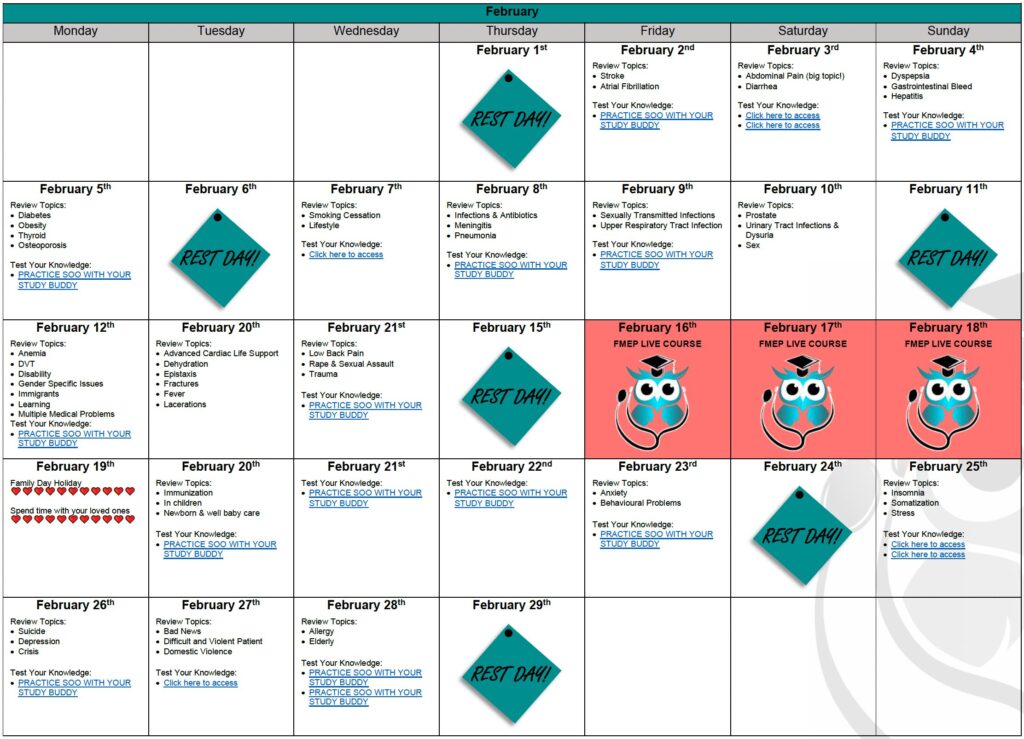
YOUR DETAILED CCFP EXAM STUDY CALENDAR: BE PREPARED!
The CCFP exam is quickly approaching. We know you are juggling many personal and professional...
Comments Off on YOUR DETAILED CCFP EXAM STUDY CALENDAR: BE PREPARED!
Just a reminder… pay attention to the questions. Here are our general tips one more time:
1. Pay attention to the questions. Look carefully at how many items you are being asked to list. If the question asks for five items, you will not get more marks if you list eight items; the examiner will look at the first five and allocate marks only for the first five answers – so be careful. On a SAMP, if it is not clearly stated how many items you should list, look at the amount of points/marks being allocated for the question to get an idea of how many answers the examiner may be anticipating you write down.
2. Do not write lengthy answers. Most questions can be answered in 10 words or less!
3. Be specific when writing down investigations (hemoglobin instead of CBC; CT abdomen instead of CT).
4. Remember that trade names and generic names are both acceptable when writing down medications.
5. For more helpful tips, you can refer to CCFP’s SAMP instructions by clicking here.
SAMP
Mrs. Lilly Sweet is an 85-year-old female patient. She is well known to you and has been with your practice for the past 30 years. Over the past 5 years, she has become increasingly more frail and developed cognitive changes that have slowly progressed. You suspect she likely has Alzheimer’s Dementia.
Due to her deteriorating state, she is being cared for by her 23-year-old grandson who lives with her. You visit her at home as she is having difficulties getting to your office. You arrive at her home around lunchtime. As soon as you enter the house, there is a foul odour. Mrs. Sweet is still lying in bed in her PJs. (14 points)
Here is an excellent article from CFP: https://www.cfp.ca/content/cfp/57/7/783.full.pdf
Here is a link to resources for Seniors: https://www.canada.ca/en/employment-social-development/corporate/seniors/forum.html
1. What are 4 physical signs of abuse/neglect? (3 points)
2. List 4 ways elders can be abused. (4 points)
3. What are 3 risk factors for a patient to be a victim of elder abuse? (3 points)
4. What are 3 factors that increase the risk that a caregiver will engage in elder abuse? (3 points)
5. In Canada, is it legally mandatory for physicians to report elder abuse? (1 point)